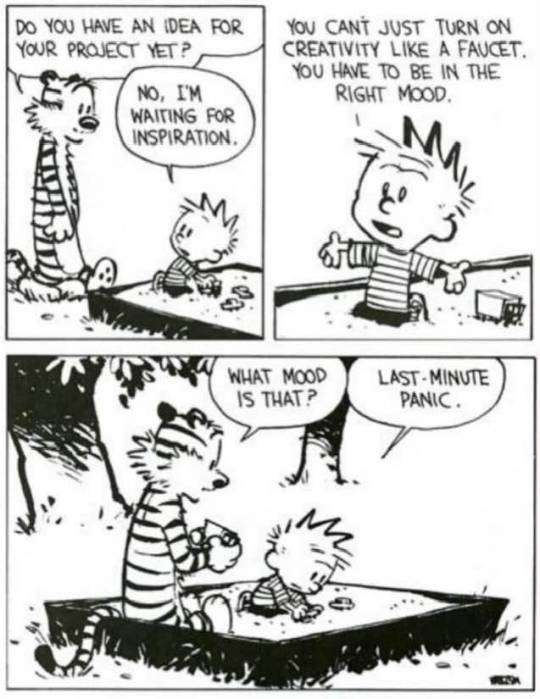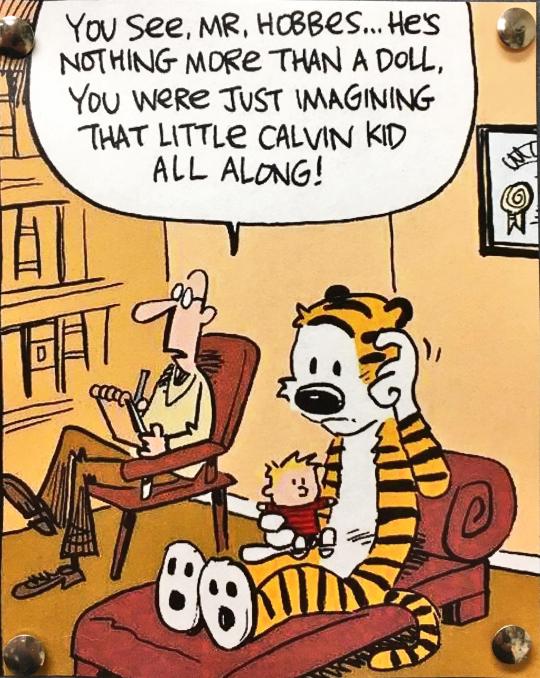Don't wanna be here? Send us removal request.
Text
HOBBES vs. TIGGER cage match TO THE DEATH say goodbye to your childhood because ONE! WILL!! DIE!!!!
82K notes
·
View notes
Photo

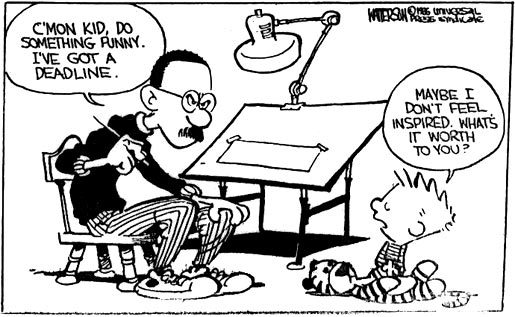
William B. “Bill” Watterson II.
66K notes
·
View notes
Text
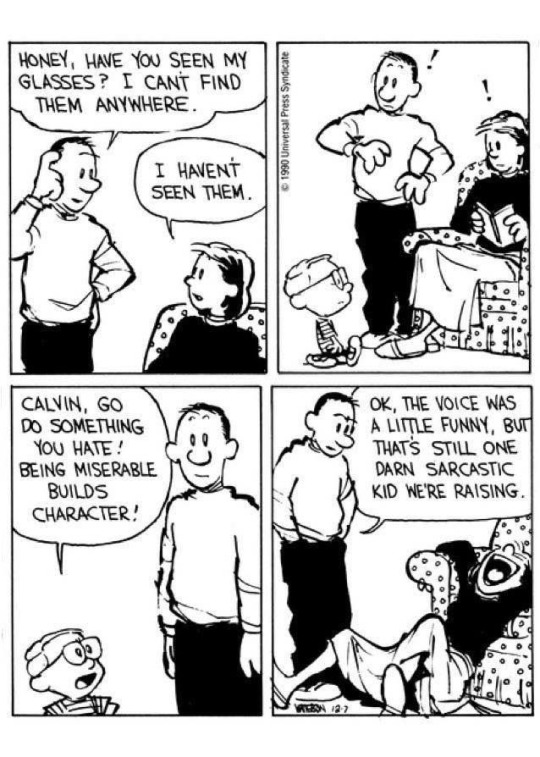
One of my favorites.
47K notes
·
View notes
Text

18K notes
·
View notes
Text
obsessed with this one

12K notes
·
View notes
Text
As a kid, I was really upset that Bill Watterson wouldn't license Calvin & Hobbes so I could have plushies or so there would be a Saturday morning cartoon. Now, I realize his resistance is the reason we don't have a Calvin & Hobbes DreamWorks movie starring Chris Pratt.
71K notes
·
View notes
Text

Watterson pulled no punches
90K notes
·
View notes
Text
I thinks folks expressing incredulity at the quality of the writing and composition in Calvin and Hobbes are often missing the context that Bill Watterson is arguably the most influential sequential artist of his generation. Like, this is a guy who once told the editors of nationally syndicated newspapers to go fuck themselves when they wanted to mess with his panel layouts, and not only did he keep his job, he got his way. He could have had literally any gig he wanted, and he chose to be the Sunday funnies guy because that's what made him happy. He's basically the Weird Al of sequential art.
59K notes
·
View notes
Text
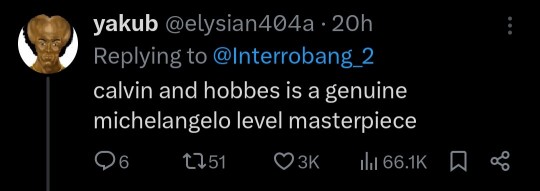

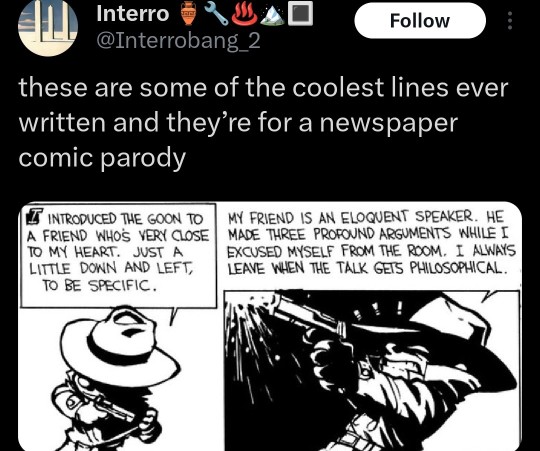
40K notes
·
View notes
Text
some important calvin and hobbes facts in case you haven't read the original comic strip in a long time or only absorbed stuff on it from memes and out of context bits on here:
Calvin's last name has never been given, and neither has any of his parent's names. This was actually why his uncle Max only showed up for a brief storyline; the creator of the comic, Bill Watterson, ultimately felt that while it was fine to have him as someone for his parents to talk to, it felt far too awkward to never have Max refer to them by name and he never made a return appearance.
The general tone of the comic is fairly light-hearted, with a big emphasis on goofy slapstick comedy contrasted by clever wordplay and often surprising adult-centered jokes that'll hit you like a slap. A big part of the comedy is, as Watterson put it (paraphrased) "It's really funny to me when people express deeply stupid ideas with really fancy terminology." One notable example you might have seen is that one bit where Calvin asks his mom for money to buy a Satan-worshiping rock album and his mom replies that there's nothing genuine about them and they're just putting on the attitude for shock value, and comisserates with Calvin as he deplores that mainstream nihilism can't be trusted. He concludes that childhood is disillusioning.
There is a LOT of criticism of the extreme materialism and selfish mentality of the late 80s, when the comic was initially written. This may go a long way to explain how its aged so well; much of what it criticizes resonates well with people today.
Bill Watterson views comic strips a legitimate form of artwork, and repeatedly fought to have more space to draw more beautiful and artistic backgrounds, which was a very hard fight and unpopular even with other comic strip artists. He eventually did win some compromises and a lot of Calvin And Hobbes' artwork shows it, with the use of space to indicate time as well as a sharp contrast between the often plain environments of mundane life contrasted by the wildly beautiful imagery of Calvin's imagination (which often sports realistic depictions in an art shift of sorts).
Hobbes is explicitly not an imaginary friend, by word of Watterson himself. We don't know WHAT he is exactly, and Hobbes is apparently unaware of the strange nature of his reality; people look at him and only see an ordinary stuffed tiger plushie, but he has a tangible effect on the world that would be physically impossible for Calvin to do on his own. He's apparently been around for a while, and was apparently around when Calvin was a young baby.
On that note; Hobbes has implicitly killed (notably treated as both a gag and also with the vibe of 'he's a tiger, duh') and while he doesn't do it again on-screen, he doesn't have any moral issues about it. Calvin claims that he's never had trouble bringing Hobbes to school because the last time he did, Hobbes killed and ate a bully named Tommy Chestnut and simply comments that it was gross and he needed a bath. Calvin's tried to repeat this again, but Hobbes was grossed out at the thought having to eat a kid raw and not being allowed to use an oven first, or complaining that children are too fattening.
Hobbes became gradually less human-like in body language and more like an actual cat in both body language and behavior; this was due to Watterson drawing more inspiration from his cat, who also inspired a lot of Hobbes' running gags, such as pouncing on Calvin when he got home. Several years into the syndication of the strip, Watterson's cat passed away, and he did a tribute to her with a comic strip of the two of them agreeing to try to dream together so they can keep playing when they have to sleep; Watterson's commentary (if I recall right), remarks on his cat: "We can see each other again in dreams."
49K notes
·
View notes
Text
ordered pizza from a small local place and they didnt actually cut it so i've chosen to revert to a wild animal and begin ripping it apart instead of just using a knife to portion slices
136K notes
·
View notes

